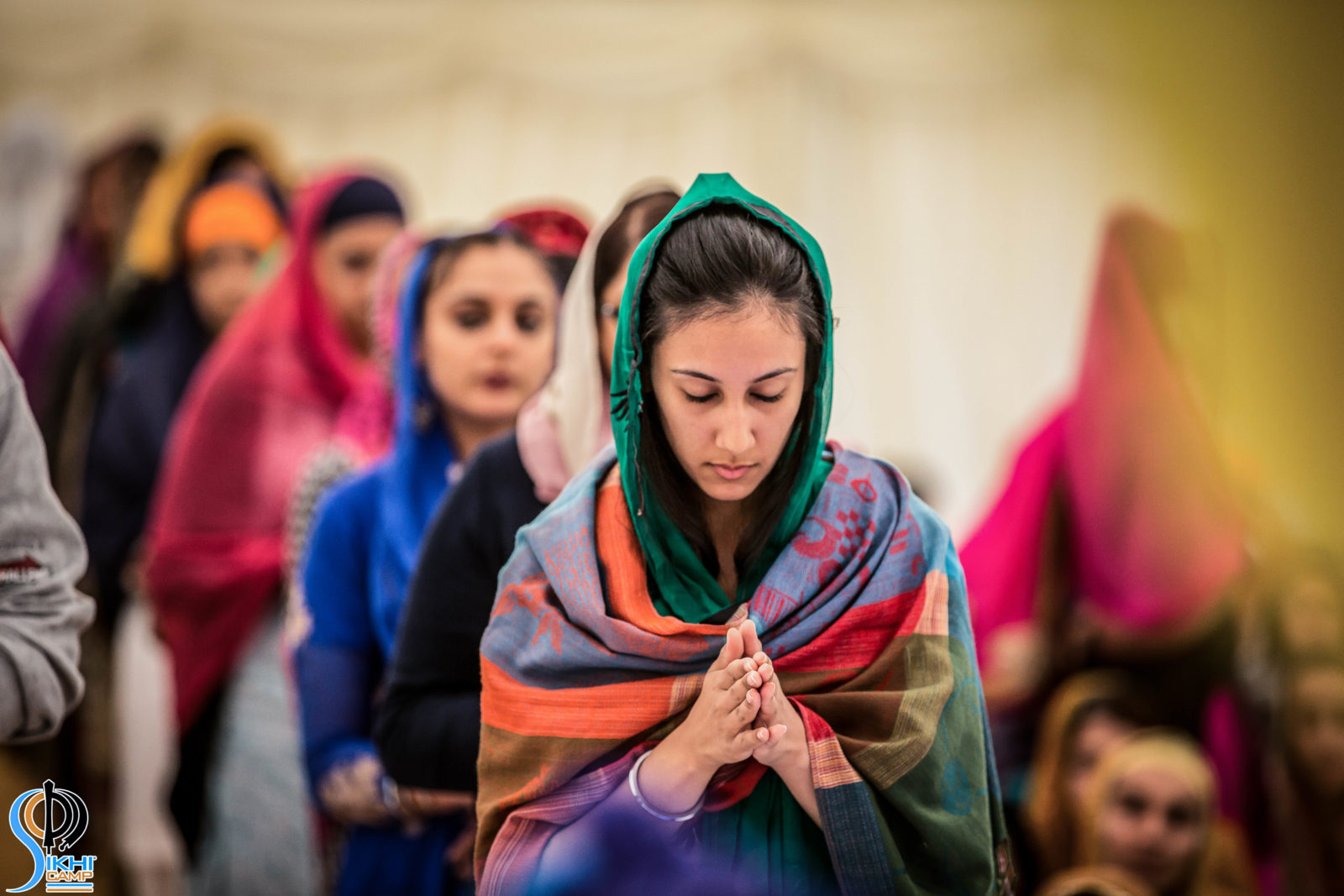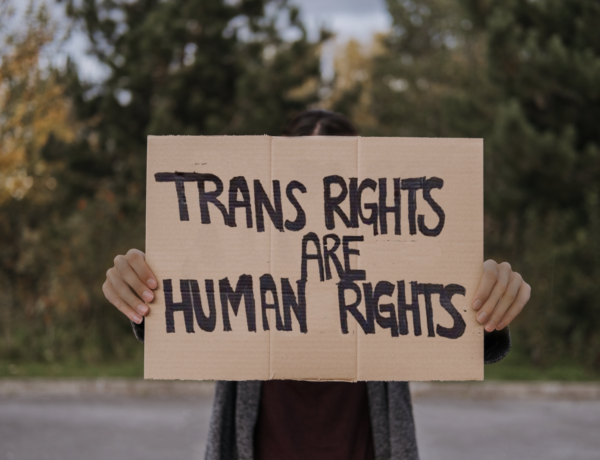by Lakhpreet Kaur
Summary
Undoubtedly, the Sikh Gurus championed women and fought to create a society where everyone, regardless of sex and gender, could thrive and flourish. Despite this however, female feticide and infanticide continues to plague Sikh and Punjabi communities across the globe. This article explores the statistics, history, cultural attitudes, and possible solutions to female feticide and infanticide.
Notes:
Mentions violence against girls and women.
As a majority Sikhs live in Punjab, this article will be exploring Punjabi statistics and practices.
Female Feticide & Infanticide Plagues Sikh & Punjabi Communities
In late 2021, comedian Vir Das delivered his “Two Indias” monologue where he highlighted the hypocrisy, contradictions, and duality of Indian society. “I come from an India where we worship women during the day and gang rape them at night.” The violence against women Vir Das references sadly starts, for many women and girls, in the womb or crib, via female feticide and infanticide. And despite strong Sikh values against such practices, it still plagues our community, from Punjab to the UK to Canada and beyond.
A recent report showed that sex ratio at birth (SRB) nationwide in India has been significantly dropping since at least the 1970s. The National Family Health Survey of 2020-21 showed that Punjab’s SRB had improved slightly in the last five years but remained below the national average. According to the survey, the sex ratio at birth is 858 females to 1000 males in urban areas and 931 females to 1000 males in rural areas of Punjab. (Ideal and natural numbers are closer to 1000 females to 1000 males).
Families employee various methods to ensure their child is male like pre-conception sex-selection, prenatal sex-determining ultrasounds, and sex-selective abortions. When mothers are unwilling to undergo such procedures, they are often violently coerced. This violence against mothers and baby girls further leads to violence against unwed women. Shocking headlines like, “Families ‘buying’ girls as marriage crisis deepens” illustrate how, “decades of female feticide have finally caught up with Punjab and Haryana,” leading to human trafficking of women.
Why do Sikhs & Punjabis Engage in Female Infanticide & Feticide?
Why are girl fetuses and infants more likely to be aborted and killed? The answer lies within the patriarchy and how family life is structured in South Asia. There is an entrenched daughter aversion in Indian society which incentivizes the devaluation of women and girls.
“Many women and men earnestly fail to see the possibility of raising a daughter who can proudly carry the family name, support her parents in old age without ridicule, and live without fear of violence against her body, and the associated pain and shame for her family,” writes activist Mallika Kaur.
Thus, for family survival, girls are seen as a liability: they will not continue the paternal lineage; it is presumed women will leave their birth home upon marriage; dowries are central to weddings; and women are not expected to take care of aging parents. In her married home, a woman will be shunned if she births a daughter. “Hence, the birth of a girl child is seen as a death knell more often than not, even today in most parts of India,” writes journalist Siddhi Shah.
This is echoed in the Punjabi saying, “Raising a daughter is like watering your neighbors’ garden,” implying that any investment made into a girl’s life will only benefit her in-laws and not her family of origin.
History of Discrimination Against Girls and Women
1700s & 1800s
High rates of female mortality and the neglect of girls in India have been documented since at least the late 1700s, particularly in the northern Indian states. British colonialists say they discovered the practice of female infanticide in the late 1700s and early 1800s during which it quickly became the topic of many correspondences within Punjabi British circles.
In 1851, the Deputy Commissioner of Gurdaspur District, Major E Lake, wrote to his government stating, “The practice of killing newborn girls is not just prevalent among the Rajputs, but among the Sikhs too.” An observation which was echoed by the Commissioner of Jullundur Doab John Lawrence who said a delegation of Bedi Sikhs approached him with a petition to allow them to kill their newborn girls. “The rationale was that the Bedis belonged to the highest caste and could not marry off their girls into any other caste, and that they had been doing it for four centuries. He warned them against the practice and reminded them that their religion [Sikhi] did not allow it. ‘It will be considered murder. I will hang each one of you found involved in female infanticide.’”
The British pointed to caste pride (as noted above), poverty, and dowry as the leading causes of female infanticide. They argued that resulting skewed sex-ratio exacerbated female discrimination leading to more female infanticide, child marriage, exuberant dowries, bride-prices, and polyandry.
In an attempt to curb female infanticide, the British passed the Act of 1870, though it had little success. It was noted that even if a girl’s death was prevented, her quality of life was not ensured: “…there is, no doubt that, as a rule, she receives less attention than would be bestowed upon a son. She is less warmly clad, and less carefully rubbed with mustard oil as a prophylactic against cold and chills to which the greater part of the mortality amongst children in India is due: she is probably not so well fed as a boy would be, and when ill her parents are not likely to make the same strenuous efforts to ensure her recovery,” wrote Professor Barbara Miller.
Interestingly, some scholars argue that the prevalence of female infanticide may have been exaggerated by the British and could have been used as political capital in order to condone political and military policies. “[The British] could retro-actively justify the two unsanctioned bloody wars with the Sikhs that led to the annexation of their rich and fertile kingdom…” wrote Dr. Yogesh Snehi.
Did the British Exacerbate Son-Preference?
While human rights violations against girls and women in South Asia have been perpetrated for centuries, some scholars believe that British colonialism exacerbated women’s declining rights. Professor Veena Talwar Odenberg argues that while the British made gestures at curbing female infanticide, their policies actually “masculinized” Punjabi economy in a way that made male children even more desirable. She argues that the colonial state and the large-scale, long-term effect of its agrarian development and revenue policies transformed Punjab into an “unambiguously masculine domain where, of necessity, fewer women would survive.”
British colonial policies regarding land ownership, agrarian commercialization, reinforcement of class differentiation, heavy and frequent taxation, and demanding the cultivation of certain crops “mauled the social fabric of Punjab”. Furthermore, imperial policies encouraged “lower” castes to become “upwardly mobile” which lead to the emulating of behaviors associated with “high” castes, including female infanticide and dowry. The British had created, Odenberg argues, a culture where having boys and male heirs lead to “better” marriage prospects, wealth, land, and pension. https://bit.ly/3zqN9xk
1970s
Fast forward to the 20th century where boy-child preference is now firmly entrenched in Indian culture. Prior to the 1970s, female infanticide was the “preferred” way of killing a girl child, notes a review in the journal Genetics in Medicine. In the 1970s, India was introduced to amniocentesis – a technology that tests amniotic fluid around a developing fetus for genetic abnormalities. Soon, people realized this method could be used to determine the sex of the child which then lead to female abortions. Then came the less invasive and cheaper ultrasound machine which facilitated more sex-selective abortions.
1990s
With the prevalence of the ultrasound, a “… thriving market for sex selection sprung up with doctors openly advertising their services,” writers journalist Priyanka Pulla. In response, the government introduced the Prenatal Diagnostics Techniques Act in 1994 which penalized healthcare professionals for telling expectant parents the sex of a child. In 2003, when technologies that allowed sex-selection prior to conception became available, the act was amended to become the Prenatal Conception and Prenatal Determination Act. However, as documented by statistic, this act has not had its intended consequences of preventing sex-selective abortions of females.
2010s
In 2011, a study in Lancet, found that up to 12 million cases of female feticide had occurred in the last 30 years.
In 2012, Punjab cabinet officials implemented the Bebe Nanki Laadli Beti Scheme for low-income families. Under this plan, each girl children would receive some health care, education and cash. While we were unable to find any reported outcomes, Social Security Minister Mr. Surjit Kumar Jayani said the Scheme has had positive results.
In 2015, the Ministry of Women and Child Development introduced a scheme, Beti Bachao, Beti Padhao Yojana (save girl child, educate girl child scheme). The main objective was to prevent gender biased sex-selective elimination, ensure survival and protection of girl child, and ensuring education and participation of the girl child. Unfortunately, in 2021, The Comptroller and Auditor General of India reported that the scheme failed to meet its objectives.
The Sikh Response
The Gurus: 1469 – 1699
Female infanticide in Punjab has not gone unnoticed by Sikhs. Prabhjot Kaur wrote for Sikh Thought documenting the numerous times the Sikh Gurus spoke out against the practice:
The Gurus placed an injunction prohibiting the killing of girls. Guru Hargobind Sahib, realizing the positive role of daughters, requested his mother to pray for the birth of a daughter, writing “A family without a modest girl is doomed.” It is said that Guru Har Rai, found an abandoned baby girl and adopted her. In Guru Gobind Singh Ji’s letter to the Sikhs of Kabul, he ordained them not to have any social relationship with a person who kills their daughters.
Guru Granth Sahib:
Guru Granth Sahib also expresses the evil nature of killing a baby girl:
ਬ੍ਰਹਮਣ ਕੈਲੀ ਘਾਤੁ ਕੰਞਕਾ ਅਣਚਾਰੀ ਕਾ ਧਾਨੁ ॥
Barahmaṇ kailī gẖāṯ kañkā aṇcẖārī kā ḏẖān.
If you kill a Brahmin, or a cow, or a baby girl, or accept the offering of a sinner…
ਫਿਟਕ ਫਿਟਕਾ ਕੋੜੁ ਬਦੀਆ ਸਦਾ ਸਦਾ ਅਭਿਮਾਨੁ ॥
Fitak fitkā koṛ baḏīā saḏā saḏā abẖimān.
…you fall from grace in the eyes of the world; the world looks at you as if you’re a leper because of the bad deeds you’ve done. While you might think you have done something great and are filled with ego, the world thinks otherwise.
~ Revealed to Guru Amar Das Sahib, Ang 1413
Click here for a deeper interpretation of this shabad.
Sikhs in History
Beyond the Gurus, various Sikh rehat-namas prohibit kuri-mar or female infanticide.
For instance, Bhai Desa Singh code of conduct, says, “O Man, shovel out of your mind all the men who indulge in female infanticide.”
Bhai Kahan Singh Nabha, the noted author of Sikh encyclopedia writes, “In Sikhism a daughter enjoys equal status with a son. A killer of a daughter is to be excommunicated from the community.”
Sikh Scholar Sant Gudar Singh worked against female infanticide. In 1758, he heard that Raja Gajpat Singh (of Jind State), was killing baby girls in his family. Gudar Singh went to his house and demanded to have the newborn baby girl. He reprimanded the family and took the girl away to raise himself. Raj Kaur grew up to be very spiritual. She was married to Sardar Mahan Singh (1774), who later became the leader of Misl Shukarchakiyan. Raj Kaur later gave birth to Maharaja Ranjit Singh in 1780. She became Ranjit’s regent during his minority and managed the affairs of the Sukerchakia Misl.
20th & 21st Century
In the early 20th century, the writers of the Sikh Rehat Maryada also stated the Sikh position on the issue: “A Sikh shall not kill his daughter, nor shall he maintain any relationship with the killer of a daughter.”
In 2001, the Akal Takhat issued a stricture against this practice declaring that female feticide and infanticide have no place in the Sikhi, and anybody indulging in the practice should be ostracized.
Solutions and Moving Forward
Long-term impacts
Acknowledging female infanticide and feticide as an injustice should spur Sikhs to action.
Female infanticide and feticide is a harmful practice that robs women and girls of their right to reach their full potential. These injustices are symptoms of the larger issue of sexism plaguing Punjabi and Indian society. Ultimately, daughter-aversion “…encourages total control of girls and women by their households and wider kin and caste networks,” writes economist Rohini Pande. For instance, daughter aversion has been found to impact not only female infanticide but also excess female child mortality, poorer health, nutrition, schooling, and career outcomes for girls. In adulthood, as the male-bias of sex ratio increases, there is a decrease in participation of women in the labour market, an increase in gender wage gap, and increase in violence against women, and increase in human-trafficking.
Shifting Attitudes
But it is not until entrenched cultural beliefs, practices, and systems change will gender inequality be eradicated. It is a challenge to rectify because it requires an attitude and cultural shift. Activist Malika Kaur points out that sex-selective abortions result from devaluing girls along with societal norms and pressures. “The real solution lies in restructuring gender roles generally…Women, and their men, must be supported in bringing about societal change, in distinguishing true cultural heritage from patriarchy shrouded by the cultural argument.”
Changing systems Not Punishing Individuals
It is easy to point at individuals engaging in such practices and blaming parents as the main perpetrators of violence. It is unfair and counter-productive to only put the onus of action on women themselves rather than on the system that deeply and systematically undervalues women and girls. Alternatively, if we view sex-selective abortions as a tool of survival in a harshly patriarchal society, more systems and players can be held accountable. Instead of simply punishing individuals for seeking sex-selective abortions, we must assure women security, honor, and prestige regardless of the sex of their children.
Scholars and experts have proposed many ideas such as, offering conditional cash transfers to incentivize families to have daughters, improving women’s education, ensuring women’s right to property and land, stopping dowry, implementing programming and policies that aim to change gender-unequal norms and beliefs and the patriarchal system that encourages them.
Pande writes that learning from how other societies shift cultural attitudes towards women for the better can give hope to the Indian situation. “The example of the struggle against female genital cutting in several countries in sub-Saharan Africa10 shows that when political will joins with cultural and other influential leaders, civil society, women, girls, men, boys, and their communities in a movement for reform, it is possible to accelerate positive change in culturally and traditionally entrenched gender-discriminatory practices”.
What Can You Do?
There are several things you can do, as an individual, to help change negative attitudes towards women and girls. Here are a few ideas:
- Speak out against and reject dowry.
- Support and join organizations that celebrate girls and strive to change cultural attitudes like, Pink Ladoo, Laadliya, Sikh Family Center, Pushpa Project, Unique Home for Girls Jalandhar, Invisible Girl Project, etc.
- Champion the girls and women in your own circles – like celebrating Lohri for girls, celebrating birthdays, encouraging girls’ independence etc. When you see acts of discrimination, large or small, call those involved into conversation.
- Look to Sikhi for support and inspiration.
- If it suits your family, establish a plan where all of your siblings equally support your parents as they age.
- Join groups that lobby for great economic opportunities for women (such as land rights and equal pay across sexes and genders).
- Consider using Kaur or Singh as your last name in order to undermine the perceived value of paternal lineage.
Photo by Jasleen Kaur





2 Comments
Arvinder Kaur
10/25/2022 at 11:00 pmHi,
Lovely article. Thanks for putting in explanatory information about this practice.
I would like to add some views to this, actually Sikhs at large never followed the real teachings of Guru Sahib’s. They adapted and accepted those practices which are largely suitable to the male population. Caste discrimination, high ego of groom’s side of family, large demands as dowry, drinking alcohol….many others. Sadly, our previous generations have created many patriarchal practices which are so deep rooted that it may take many future generations to overcome the damage.
Even in our Guruduwara Sahib’s all the Gurupurab and Samagams are observed for Male Guru’s and Male Shaheeds/ Male soldiers (Baba Banda Singhji, Bhai Dyala ji….) but never any Samagam for female warriors of that time (Mata Bhag Kaur, Mata Ajit kaur, Mata Khivi….to name few).
Gurughar has the highest responsibility in regulating the Sikh religion. Gurughar and Granthi Singh should not perform the wedding ceremony of the family involved in dowry and hugely expensive wedding and wedding where alcohol is served.
These are just few of my views, there are many other thoughts run through my mind on daily basis. Some are part of the discrimination I faced as a girl child born in India during 1970’s. That trauma and grief is still here and those kind discrimination is still largely prevalent in Sikh community.
Thanks in advance, for reading my long reply. Just needed to share my thoughts at some platform.
Regards
Arvinder Kaur
Anonymous
09/24/2023 at 4:41 amAs a Christian I am amazed at a nation that murders it own children.
I am also annoyed but not surprised that you tried to blame your child murder habits on the British.
You should grow up, stop being money obsessed and love your children. What sort of father would murder his children to save money. The whole thing makes me shudder with horror. You would go to prison for life if you murdered your child in a civilised country.